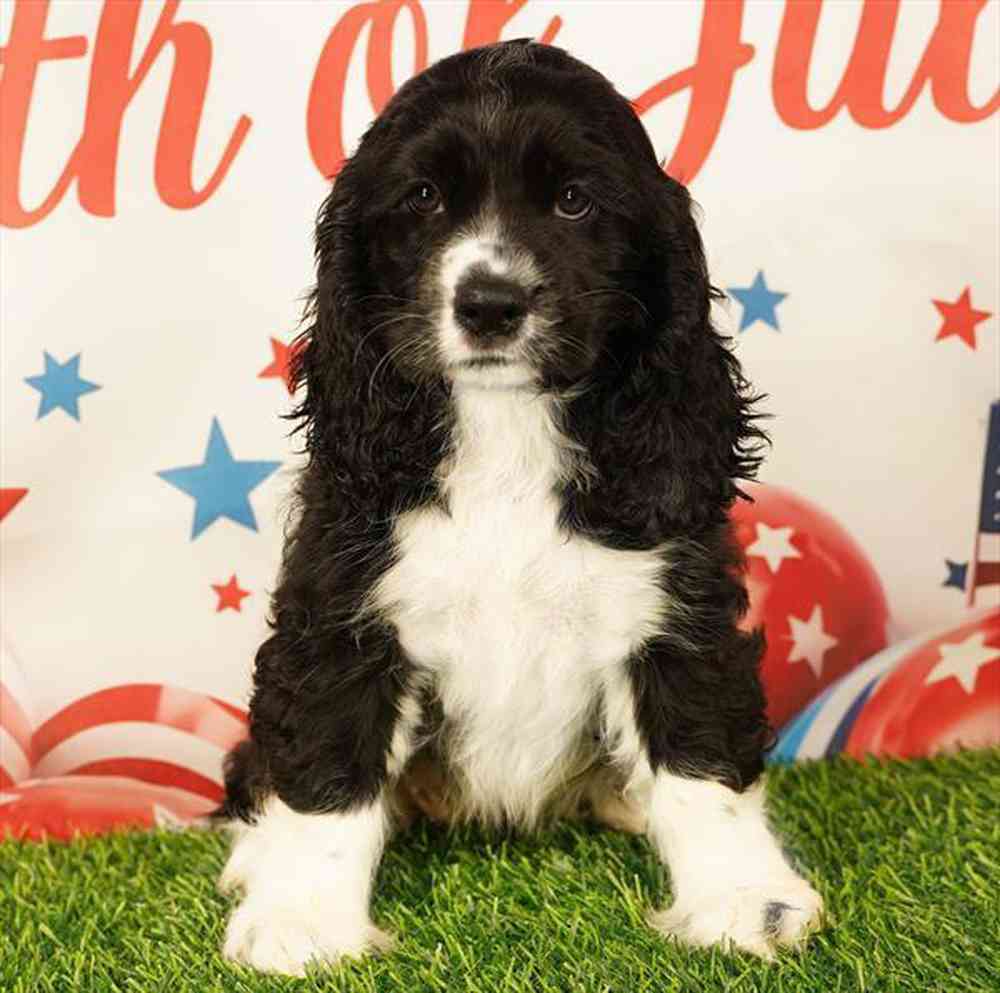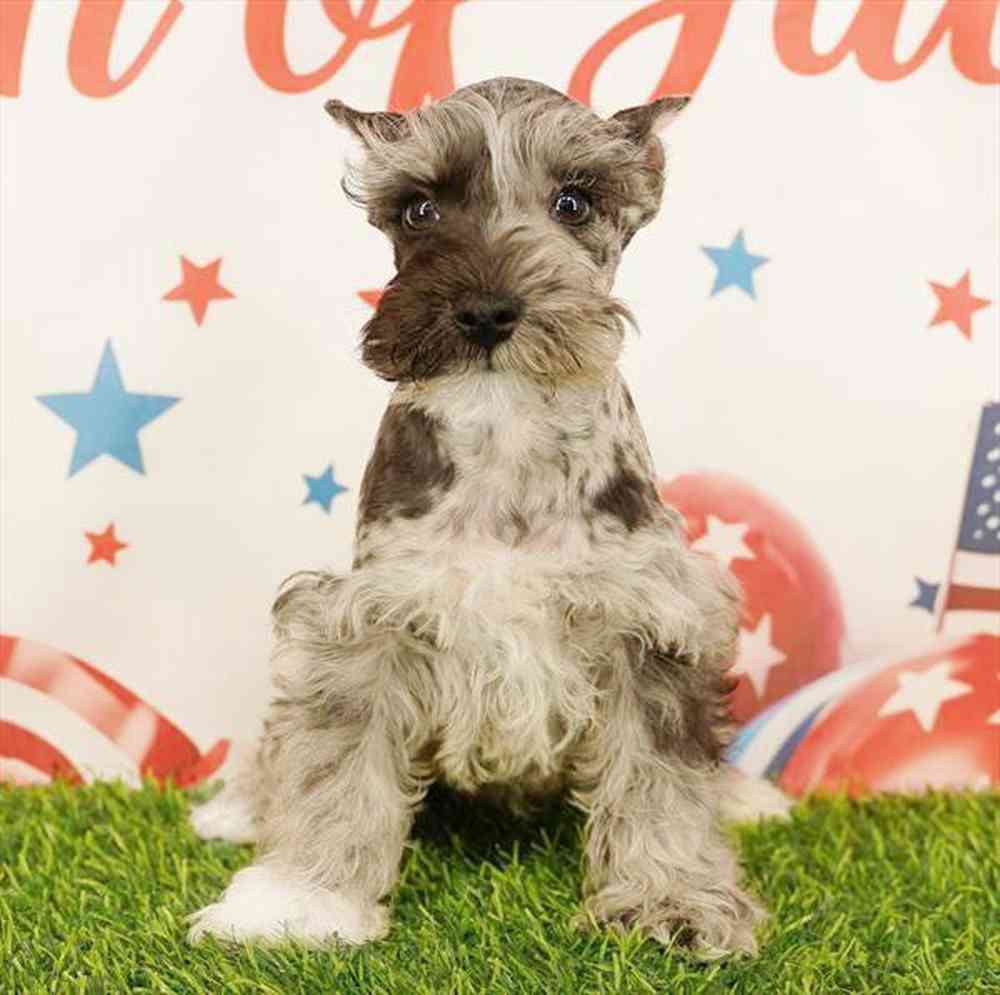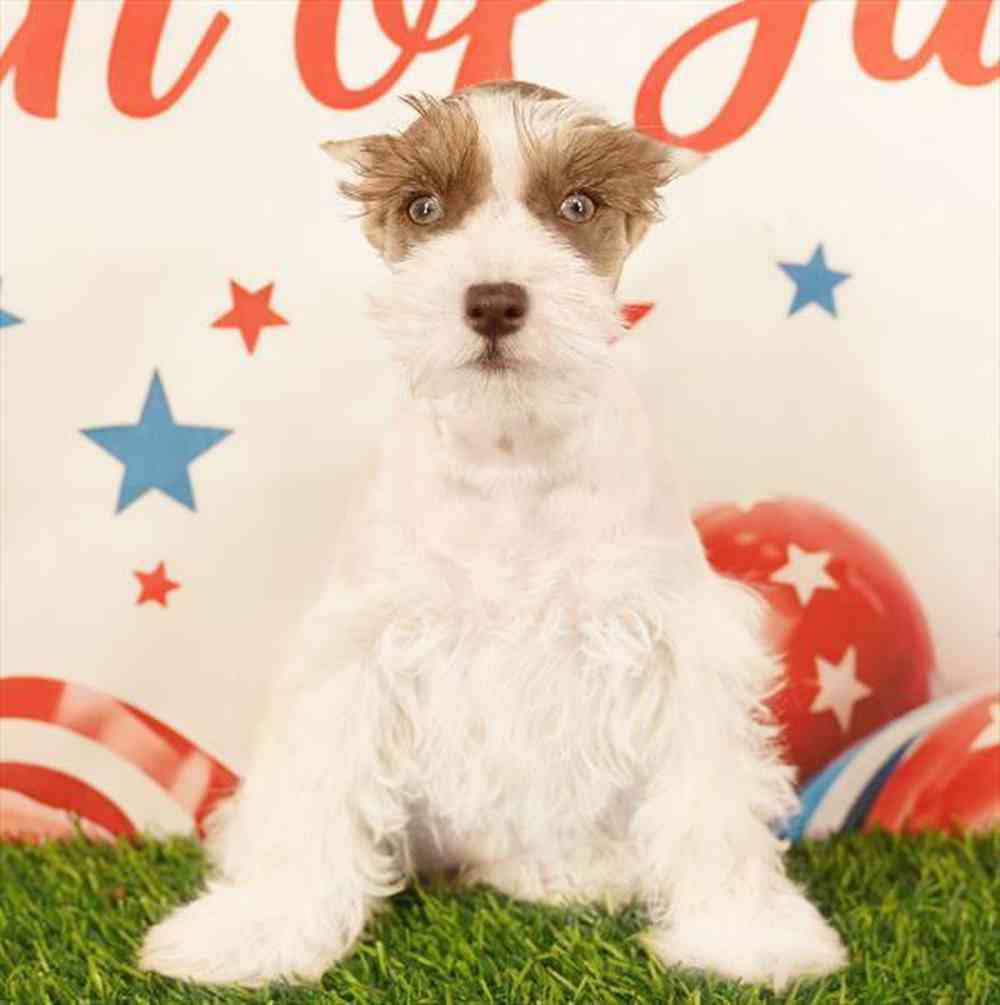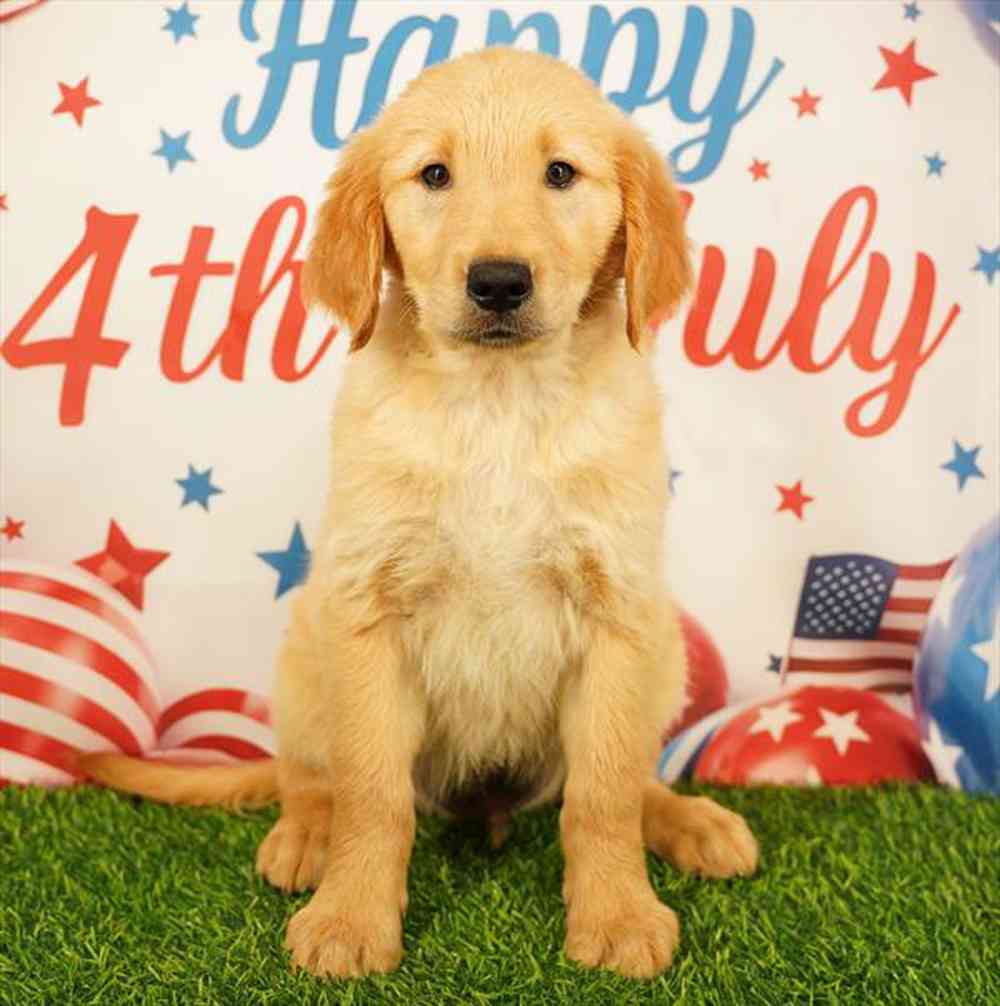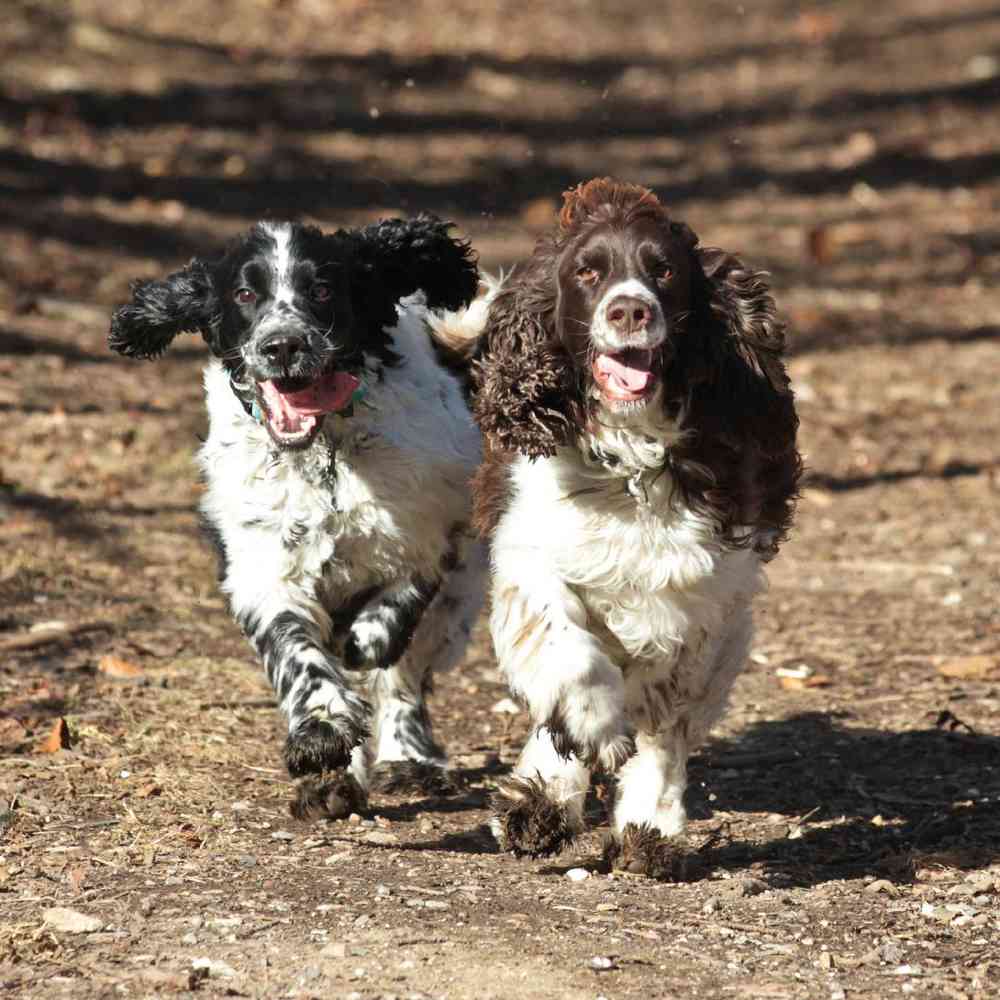
AKC Registrable
English Springer Spaniel
The English Springer Spaniel is a sweet-faced, lovable bird dog of great energy, stamina, and brains. Sport hunters cherish the duality of working Springers: handsome, mannerly pets during the week, and trusty hunting buddies on weekends.
Available Pets
All our Pets have found their homes. Please enter your contact information below so we can get in touch with you when we have found the perfect Pets for your family.
Breed Standard
General Appearance
The English Springer Spaniel is a medium-sized sporting dog, with a compact body and a docked tail. His coat is moderately long, with feathering on his legs, ears, chest and brisket. His pendulous ears, soft gentle expression, sturdy build and friendly wagging tail proclaim him unmistakably a member of the ancient family of Spaniels. He is above all a well-proportioned dog, free from exaggeration, nicely balanced in every part. His carriage is proud and upstanding, body deep, legs strong and muscular, with enough length to carry him with ease. Taken as a whole, the English Springer Spaniel suggests power, endurance and agility. He looks the part of a dog that can go, and keep going, under difficult hunting conditions. At his best, he is endowed with style, symmetry, balance and enthusiasm, and is every inch a sporting dog of distinct spaniel character, combining beauty and utility.
Size, Proportion, Substance
The Springer is built to cover rough ground with agility and reasonable speed. His structure suggests the capacity for endurance. He is to be kept to medium size. Ideal height at the shoulder for dogs is 20 inches; for bitches, it is 19 inches. Those more than one inch under or over the breed ideal are to be faulted. A 20 inch dog, well-proportioned and in good condition, will weigh approximately 50 pounds; a 19 inch bitch will weigh approximately 40 pounds. The length of the body (measured from point of shoulder to point of buttocks) is slightly greater than the height at the withers. The dog too long in body, especially when long in the loin, tires easily and lacks the compact outline characteristic of the breed. A dog too short in body for the length of his legs, a condition which destroys balance and restricts gait, is equally undesirable. A Springer with correct substance appears well-knit and sturdy with good bone, however, he is never coarse or ponderous.
Head
The head is impressive without being heavy. Its beauty lies in a combination of strength and refinement. It is important that its size and proportion be in balance with the rest of the dog. Viewed in profile, the head appears approximately the same length as the neck and blends with the body in substance. The stop, eyebrows and chiseling of the bony structure around the eye sockets contribute to the Springer's beautiful and characteristic expression, which is alert, kindly and trusting. The eyes, more than any other feature, are the essence of the Springer's appeal. Correct size, shape, placement and color influence expression and attractiveness. The eyes are of medium size and oval in shape, set rather well-apart and fairly deep in their sockets. The color of the iris harmonizes with the color of the coat, preferably dark hazel in the liver and white dogs and black or deep brown in the black and white dogs. Eyerims are fully pigmented and match the coat in color. Lids are tight with little or no haw showing. Eyes that are small, round or protruding, as well as eyes that are yellow or brassy in color, are highly undesirable. Ears are long and fairly wide, hanging close to the cheeks with no tendency to stand up or out. The ear leather is thin and approximately long enough to reach the tip of the nose. Correct ear set is on a level with the eye and not too far back on the skull. The skull is medium-length and fairly broad, flat on top and slightly rounded at the sides and back. The occiput bone is inconspicuous. As the skull rises from the foreface, it makes a stop, divided by a groove, or fluting, between the eyes. The groove disappears as it reaches the middle of the forehead. The amount of stop is moderate. It must not be a pronounced feature; rather it is a subtle rise where the muzzle joins the upper head. It is emphasized by the groove and by the position and shape of the eyebrows, which are well-developed. The muzzle is approximately the same length as the skull and one half the width of the skull. Viewed in profile, the toplines of the skull and muzzle lie in approximately parallel planes. The nasal bone is straight, with no inclination downward toward the tip of the nose, the latter giving an undesirable downfaced look. Neither is the nasal bone concave, resulting in a "dish-faced" profile; nor convex, giving the dog a Roman nose. The cheeks are flat, and the face is well-chiseled under the eyes. Jaws are of sufficient length to allow the dog to carry game easily: fairly square, lean and strong. The upper lips come down full and rather square to cover the line of the lower jaw, however, the lips are never pendulous or exaggerated. The nose is fully-pigmented, liver or black in color, depending on the color of the coat. The nostrils are wellopened and broad. Teeth are strong, clean, of good size and ideally meet in a close scissors bite. An even bite or one or two incisors slightly out of line are minor faults. Undershot, overshot and wry jaws are serious faults and are to be severely penalized.
Neck, Topline, Body
The neck is moderately long, muscular, clean and slightly arched at the crest. It blends gradually and smoothly into sloping shoulders. The portion of the topline from withers to tail is firm and slopes very gently. The body is short-coupled, strong and compact. The chest is deep, reaching the level of the elbows, with well-developed forechest; however, it is not so wide or round as to interfere with the action of the front legs. Ribs are fairly long, springing gradually to the middle of the body, then tapering as they approach the end of the ribbed section. The underline stays level with the elbows to a slight upcurve at the flank. The back is straight, strong and essentially level. Loins are strong, short and slightly arched. Hips are nicely-rounded, blending smoothly into the hind legs. The croup slopes gently to the set of the tail, and tail-set follows the natural line of the croup. The tail is carried horizontally or slightly elevated and displays a characteristic lively, merry action, particularly when the dog is on game. A clamped tail (indicating timidity or undependable temperament) is to be faulted, as is a tail carried at a right angle to the backline in Terrier fashion.
Forequarters
Efficient movement in front calls for proper forequarter assembly. The shoulder blades are flat and fairly close together at the tips, molding smoothly into the contour of the body. Ideally, when measured from the top of the withers to the point of the shoulder to the elbow, the shoulder blade and upper arm are of apparent equal length, forming an angle of nearly 90 degrees; this sets the front legs well under the body and places the elbows directly beneath the tips of the shoulder blades. Elbows lie close to the body. Forelegs are straight with the same degree of size continuing to the foot. Bone is strong, slightly flattened, not too round or too heavy. Pasterns are short, strong and slightly sloping, with no suggestion of weakness. Dewclaws are usually removed. Feet are round or slightly oval. They are compact and well-arched, of medium size with thick pads, and well-feathered between the toes.
Hindquarters
The Springer should be worked and shown in hard, muscular condition with well-developed hips and thighs. His whole rear assembly suggests strength and driving power. Thighs are broad and muscular. Stifle joints are strong. For functional efficiency, the angulation of the hindquarter is never greater than that of the forequarter, and not appreciably less. The hock joints are somewhat rounded, not small and sharp in contour. Rear pasterns are short (about 1/3 the distance from the hip joint to the foot) and strong, with good bone. When viewed from behind, the rear pasterns are parallel. Dewclaws are usually removed. The feet are the same as in front, except that they are smaller and often more compact.
Coat
The Springer has an outer coat and an undercoat. On the body, the outer coat is of medium length, flat or wavy, and is easily distinguishable from the undercoat, which is short, soft and dense. The quantity of undercoat is affected by climate and season. When in combination, outer coat and undercoat serve to make the dog substantially waterproof, weatherproof and thornproof. On ears, chest, legs and belly the Springer is nicely furnished with a fringe of feathering of moderate length and heaviness. On the head, front of the forelegs, and below the hock joints on the front of the hind legs, the hair is short and fine. The coat has the clean, glossy, "live" appearance indicative of good health. It is legitimate to trim about the head, ears, neck and feet, to remove dead undercoat, and to thin and shorten excess feathering as required to enhance a smart, functional appearance. The tail may be trimmed, or well fringed with wavy feathering. Above all, the appearance should be natural. Overtrimming, especially the body coat, or any chopped, barbered or artificial effect is to be penalized in the show ring, as is excessive feathering that destroys the clean outline desirable in a sporting dog. Correct quality and condition of coat is to take precedence over quantity of coat.
Color
All the following combinations of colors and markings are equally acceptable:(1) Black or liver with white markings or predominantly white with black or liver markings; (2) Blue or liver roan; (3) Tricolor: black and white or liver and white with tan markings, usually found on eyebrows, cheeks, inside of ears and under the tail. Any white portion of the coat may be flecked with ticking. Off colors such as lemon, red or orange are not to place.
Gait
The final test of the Springer's conformation and soundness is proper movement. Balance is a prerequisite to good movement. The front and rear assemblies must be equivalent in angulation and muscular development for the gait to be smooth and effortless. Shoulders which are well laid-back to permit a long stride are just as essential as the excellent rear quarters that provide driving power. Seen from the side, the Springer exhibits a long, ground-covering stride and carries a firm back, with no tendency to dip, roach or roll from side to side. From the front, the legs swing forward in a free and easy manner. Elbows have free action from the shoulders, and the legs show no tendency to cross or interfere. From behind, the rear legs reach well under the body, following on a line with the forelegs. As speed increases, there is a natural tendency for the legs to converge toward a center line of travel. Movement faults include high-stepping, wasted motion; short, choppy stride; crabbing; and moving with the feet wide, the latter giving roll or swing to the body.
Temperament
Friendly, Playful, Obedient
Overview
Group
Sporting
About
Built for long days in the field, English Springer Spaniels are tough, muscular hunters standing 19 to 20 inches at the shoulder and weighing between 40 and 50 pounds. The double coat comes in several colors and patterns, the ears are long and lush, and the kindly, trusting expression of the eyes is a cherished hallmark of the breed. Springers move with a smooth, ground-covering stride. Bred to work closely with humans, Springers are highly trainable people-pleasers. They crave company and are miserable when neglected. Polite dogs, Springers are good with kids and their fellow mammals. They are eager to join in any family activity. Long walks, games of chase and fetch, and swimming are favorite pastimes of these rugged spaniels.
History
During the long history of Britain’s land spaniels, dogs described as “cockers” or “springers” were often born in the same litter. It would take many generations of careful, purposeful breeding before such sporting spaniels as the English Springer Spaniel, English Cocker Spaniel, and Field Spaniel could be sorted into the distinct breeds we know today. England’s springer-type spaniel first emerged centuries ago to work on upland game birds. Before the invention of the wheel-lock firearm in the 17th century, springing spaniels worked in tandem with hunters who brought down their quarry with nets, falcons, or bows, or some combination of these. After the hunting rifle revolutionized the sport, springers quickly earned a reputation as eager and reliable gundogs. The English Springer’s job is to detect game birds in high grass or bramble, flush or “spring” the birds from their cover, then point and retrieve the downed bird. Breed literature tells us that Springers will work relentlessly all day in the field and then, in the words of one historian, “retire to the easy companionship of family, hearth, and home after a good day’s hunt.” At the first British dog shows, in the 1870s, English and Welsh Springer Spaniels were exhibited as the same breed. This held until 1902, when the Kennel Club (England) recognized the two Springers separately. English Springers gained their first great North American fame in the 1920s, and they soon made their mark as a tough but stylish gundog in the bird fields of America and Canada. The English Springer Spaniel Field Trial Association, the breed’s AKC parent club, held its first meeting in 1924. In recent years, the breed’s trainability, durability, and keen nose have been used to great advantage in K-9 detection work.
Standard
The English Springer Spaniel is a medium-sized sporting dog, with a compact body and a docked tail. His coat is moderately long, with feathering on his legs, ears, chest and brisket. His pendulous ears, soft gentle expression, sturdy build and friendly wagging tail proclaim him unmistakably a member of the ancient family of Spaniels. He is above all a well-proportioned dog, free from exaggeration, nicely balanced in every part. His carriage is proud and upstanding, body deep, legs strong and muscular, with enough length to carry him with ease. Taken as a whole, the English Springer Spaniel suggests power, endurance and agility. He looks the part of a dog that can go, and keep going, under difficult hunting conditions. At his best, he is endowed with style, symmetry, balance and enthusiasm, and is every inch a sporting dog of distinct spaniel character, combining beauty and utility.
Nutrition
Feed the Springer a high-quality dog food appropriate to the dog’s age (puppy, adult, or senior) and activity level. Treats can be an important aid in training, but giving too many can cause obesity. Give table scraps sparingly, if at all, especially avoiding cooked bones and foods with overly high fat content. Learn about which human foods are safe for dogs, and which are not. Check with your vet if you have any concerns about your dog’s weight or diet.
Grooming
Weekly brushing will help to remove dirt and loose hair and keep the Springer’s coat healthy, shining, and free of mats. Any tangles can be worked out with a slicker brush or metal dog comb. The Springer can be trimmed by the owner or taken to a professional groomer for clipping and neatening-up of the coat, particularly the feet, the areas around the head and neck, and under the tail. As with all breeds, the nails should be trimmed regularly, as overly long nails can be painful to the dog and cause problems walking and running.
Exercise
While they are happiest living indoors with their human family, English Springer Spaniels enjoy outdoor activities and make great companions on long walks or hikes. With proper exercise the breed can be suitable for owners living in a small house or apartment, although a home having a large, fenced yard where the dog can run or engage in play-sessions with his people is probably ideal. Daily exercise will help keep the Springer healthy and happy. This can come in the form of long walks and play sessions. The breed also exercises mind and body by participating in obedience, tracking, agility, rally, and other activities that can be enjoyed by dog and owner.
Training
Early socialization and puppy training classes are important and help to ensure that the Springer grows into a well-adjusted, well-mannered companion. Springers are lively and highly intelligent, and continued training and gentle guidance are vital. The owner should be sure to be in control at all times, because the Springer is an active and forward explorer of his environment. The Springer wants to be with his family, and undesirable behaviors can result if he is regularly left alone for long periods of time.
Health
English Springer Spaniels are generally healthy dogs, but there are there are several health and genetic screening considerations specific to the breed. Conditions sometimes seen in the breed include elbow and hip dysplasia and eye conditions. Responsible breeders will screen their stock for conditions the breed can be prone to. The Springer’s ears should be checked regularly for signs of infection, and the teeth should be brushed often, using a toothpaste designed for dogs.


